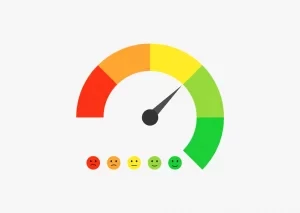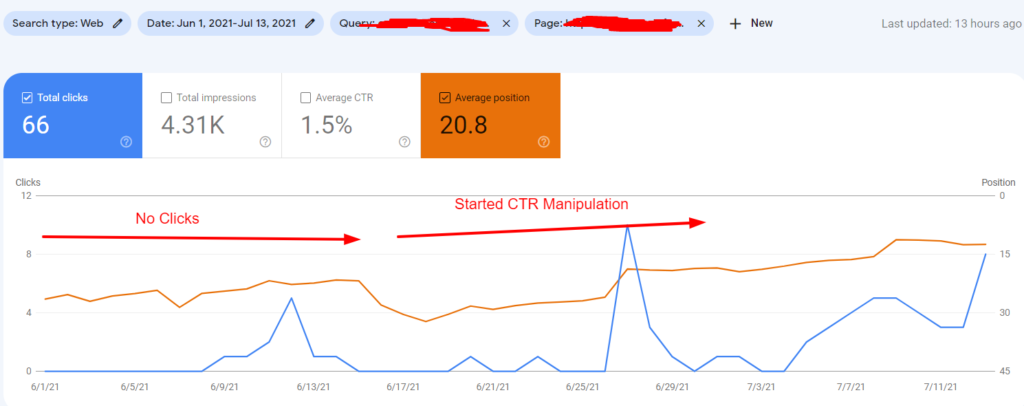Innovative Methods to CTR Control for Marketers
As the digital landscape develops, marketing professionals are significantly tasked with enhancing Click-Through Rates (CTR) to drive engagement and conversion. Innovative methods, such as AI-driven personalization and dynamic content techniques, have become crucial tools in this venture. By harnessing information analytics to customize experiences and using A/B screening for constant optimization, marketing professionals can discover insights that change their projects. Nonetheless, the obstacle depends on successfully integrating these techniques to achieve continual outcomes. Exploring the intricacies of these approaches might expose unexpected solutions that can redefine standard advertising practices.

Recognizing Click-Through Price Dynamics
Comprehending the characteristics of Click-Through Price (CTR) is crucial for marketers aiming to optimize their digital campaigns. CTR, defined as the ratio of individuals who click on a certain link to the number of overall individuals that watch a email, page, or ad , functions as a critical performance metric. A higher CTR shows reliable messaging and importance, cultivating customer involvement and driving conversions.

Additionally, A/B screening various elements of campaigns-- such as headings, images, and CTA wording-- offers beneficial understandings into what drives individual involvement. Recognizing these dynamics allows marketing experts to refine their techniques, making sure that electronic projects not just reach but also resonate with their designated target markets, inevitably bring about boosted CTR and enhanced project efficiency.
Leveraging Information Analytics for Insights
Efficient advertising approaches increasingly count on data analytics to reveal insights that drive decision-making. Marketers can harness huge volumes of data to identify patterns, trends, and customer actions that straight influence click-through prices (CTR) By employing logical tools, teams can dissect numerous metrics-- such as customer demographics, engagement degrees, and project performance-- to tailor their marketing efforts better.
Data analytics enables marketing experts to sector target markets based on specific criteria, making it possible for targeted messaging that reverberates with unique consumer teams (CTR Manipulation Press Release). This division results in much more relevant web content, which can improve individual engagement and, ultimately, CTR. Furthermore, evaluating historical information allows marketers to prepare for future patterns, allowing for aggressive modifications to campaigns
In addition, A/B testing is a powerful approach within information analytics that assists in determining which aspects of a project yield the very best outcomes. By systematically contrasting various versions of ads or web content, online marketers can improve their techniques based upon empirical proof. Ultimately, leveraging data analytics not just help in optimizing present projects yet also promotes a society of continual improvement, making resource sure that advertising and marketing efforts remain lined up with advancing consumer preferences and market dynamics.
AI-Driven Personalization Methods

These methods utilize artificial intelligence formulas to evaluate substantial amounts of customer data, making it possible for brands to recognize preferences, habits, and purchasing patterns. With this understanding, marketers can provide personalized material, item suggestions, and targeted promotions, guaranteeing that each communication really feels engaging and appropriate to the customer.
Moreover, AI-driven personalization permits real-time adjustments based on customer interactions, producing a vibrant advertising and marketing environment that adjusts to transforming choices. For instance, anticipating analytics can anticipate future acquiring behavior, allowing brand names to proactively fulfill customer needs before they develop - GMB CTR Manipulation.
Additionally, AI can segment audiences with precision, enabling more efficient targeting of projects. By concentrating on details customer teams and customizing messages to their one-of-a-kind characteristics, brands can maximize their return on investment and enhance general campaign efficiency. As AI innovation remains to develop, the possibility this contact form for customization in advertising and marketing will just come to be a lot more impactful and innovative.
Crafting Compelling Call-to-Actions
A compelling call-to-action (CTA) acts as a critical component in leading customers towards wanted outcomes, whether that be buying, enrolling in an e-newsletter, or engaging with web content. The performance of a CTA rests on its ability to resonate with the target market, motivating instant action.
To craft engaging CTAs, marketers need to focus on clearness and necessity (CTR Manipulation Service). Expressions such as "Get Going Currently" or "Case Your Discount rate Today" evoke a feeling of immediacy, encouraging customers to act right away. Furthermore, the language used must be tailored to the target market's motivations and choices, using words that line up with their interests and worths
Visual layout likewise plays a key duty in CTA effectiveness. A well-placed switch with contrasting shades can record attention and attract users in. Making certain that CTAs project on the web page and easily obtainable improves their presence, therefore raising click-through rates.
A/B Examining for Continuous Improvement
Checking variations of advertising components is necessary for optimizing efficiency and understanding customer behavior. A/B screening, an approach where two or even more variations of an advertising component are compared, allows online marketers to establish which version better reverberates with their audience. This methodical strategy permits data-driven decision-making, lessening presumptions and taking full advantage of the performance of marketing techniques.
When carrying out A/B examinations, it is crucial to concentrate on specific components such as headlines, images, or call-to-action switches. Each test needs to have a clear theory and a defined statistics for success, such as click-through prices (CTR) or conversion prices. By separating variables, marketers can pinpoint which alters yield the most considerable influence on customer involvement.
In addition, A/B screening need to be an ongoing procedure instead than a single occasion. Continuous experimentation fosters a culture of improvement, allowing marketers to adjust to changing customer choices and market characteristics. As data builds up, insights gleaned from these tests can notify future projects, ensuring that advertising and marketing initiatives stay effective and relevant. Inevitably, A/B screening is a powerful tool for marketers striving for quality in their methods and accomplishing sustainable growth.
Verdict
In verdict, innovative techniques to adjusting Click-Through Fees (CTR) equip marketing experts to address enhance interaction and maximize project effectiveness. By leveraging data analytics, AI-driven customization, and engaging call-to-actions, marketers can create tailored experiences that resonate with target audiences.
As the electronic landscape advances, marketers are increasingly tasked with improving Click-Through Fees (CTR) to drive involvement and conversion. By harnessing data analytics to tailor experiences and utilizing A/B testing for constant optimization, marketing professionals can reveal understandings that change their projects.Recognizing the characteristics of Click-Through Price (CTR) is vital for marketing experts intending to maximize their electronic projects. Online marketers can harness large volumes of data to identify patterns, trends, and customer actions that directly effect click-through rates (CTR)In verdict, cutting-edge strategies to adjusting Click-Through Fees (CTR) equip marketing professionals to improve interaction and optimize campaign performance.